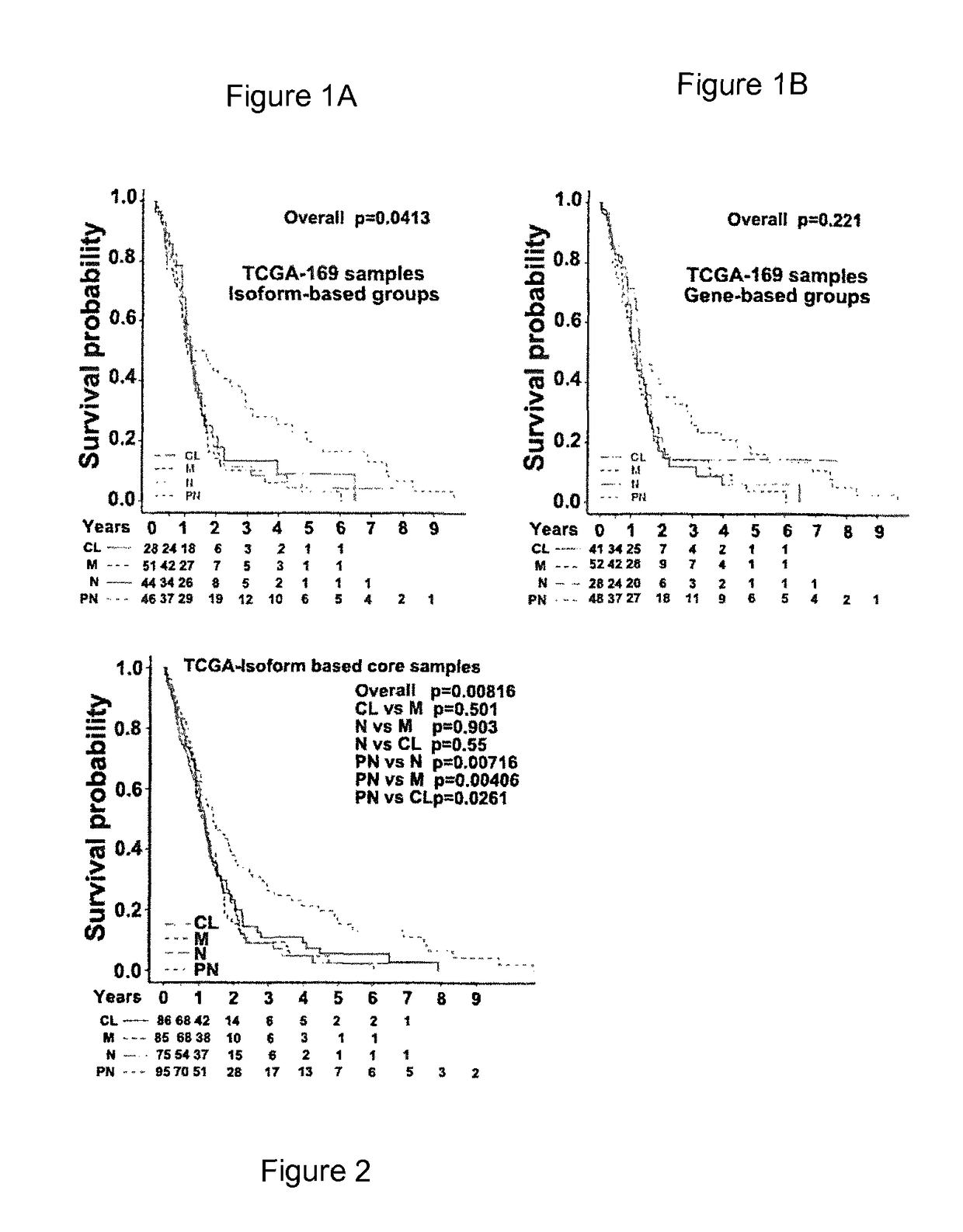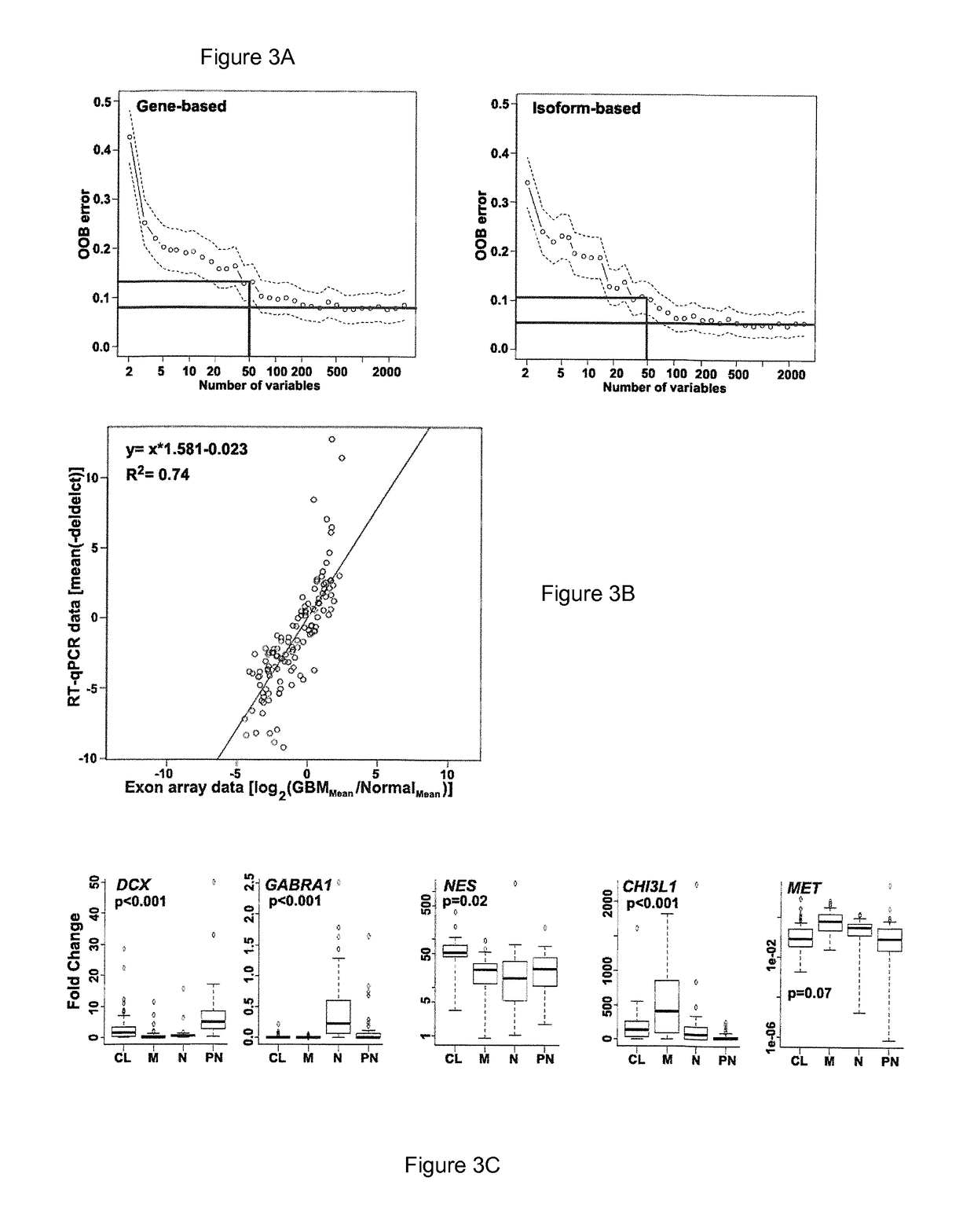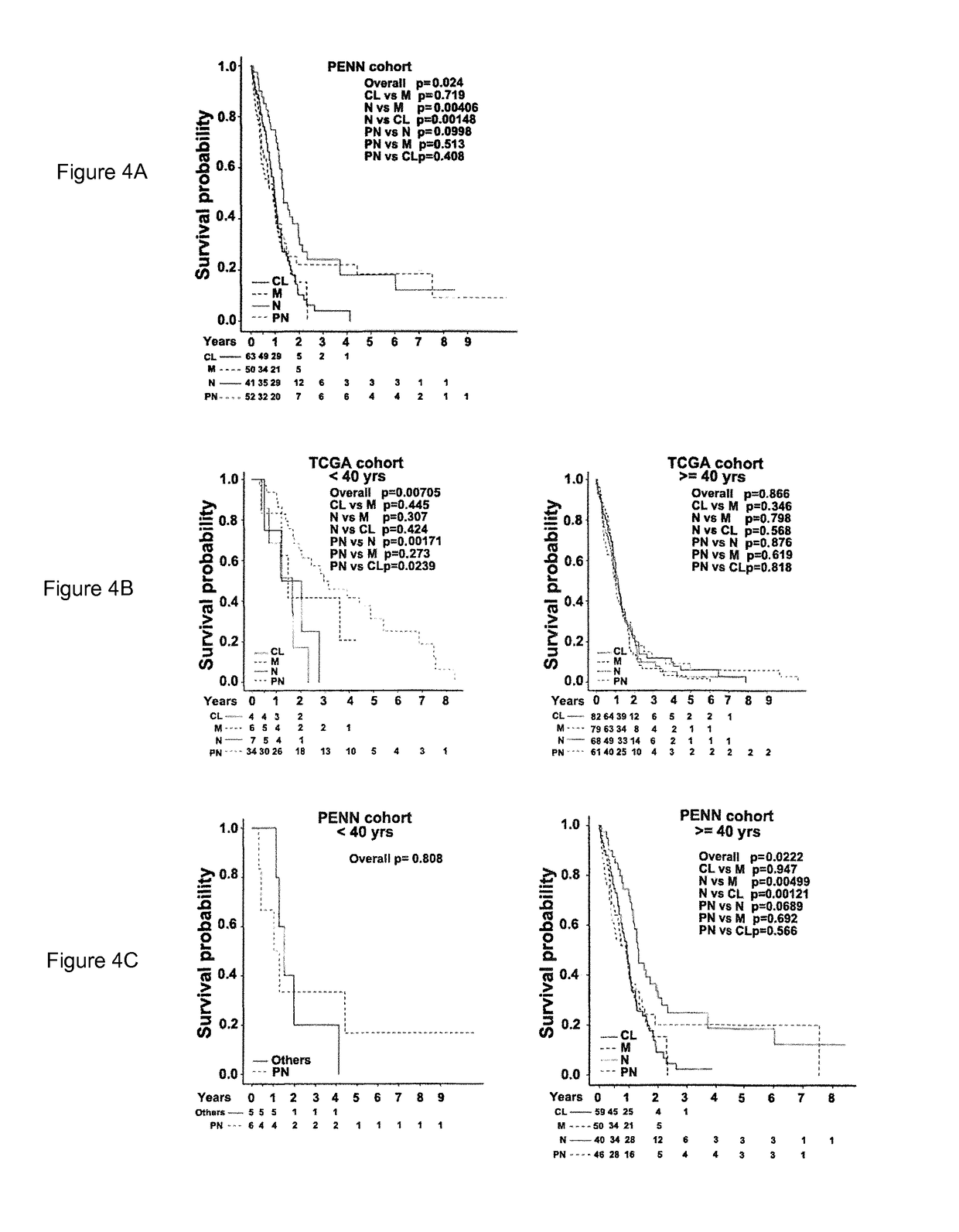Methods and compositions for diagnosis of glioblastoma or a subtype thereof
a technology of glioblastoma and composition, applied in the direction of microbiological testing/measurement, biochemistry apparatus and processes, etc., can solve the problem that there is no clinical diagnostic test for glioblastoma subtypes available, and achieve the effect of improving clinical managemen
- Summary
- Abstract
- Description
- Claims
- Application Information
AI Technical Summary
Benefits of technology
Problems solved by technology
Method used
Image
Examples
example 1
and Methods
[0113]Recent genome-wide studies have discovered that the majority of human genes produce multiple transcript-variants and protein isoforms, which could be involved in different functional pathways.6 Moreover, altered expression of transcript-variants and protein isoforms for numerous genes is linked with cancer and its prognosis, as cancer cells manipulate regulatory mechanisms to express specific isoforms that confer drug resistance and survival advantages.7 For example, cancer-associated alterations in alternative exons and splicing machinery have been identified in cancer samples,8-13 demonstrating the efficacy of specific transcript-variants as diagnostic and prognostic markers.14
[0114]Statistical analysis was performed on The Cancer Genome Atlas (TCGA) datasets to determine differentially expressed genes and isoforms between GBM and normal brain. Machine-learning approaches were applied to derive robust stratification of GBM samples, select the most discriminatory ...
example 2
Isoform-Level Changes Occur in the GBM Transcriptome
[0151]Unprocessed exon-array expression data and clinical details for 419 GBM and 10 normal brain samples were downloaded from the TCGA data portal. A subset of 173 GBM samples, marked as “core samples,” was further stratified by the method of Verhaak et al3 into one of the four molecular groups (namely, neural-N, proneural-PN, mesenchymal-M, and classical-CL) (data not shown). The transcript (isoform)-level and gene-level expression estimates were obtained for a total of 114,930 different transcript-variants that correspond to 35,612 different gene models (Ensembl database, version 56). While the comparative statistical analysis between GBM and normal brain at the gene-level produced 2,834 genes as differentially expressed, similar analysis at the isoform-level revealed that a total of 7,313 transcript-variants that correspond to 4,215 genes were significantly altered in GBMs (q≤0.001 and fold-change ≥2.0).
[0152]The following Tabl...
example 3
evel Gene Expression Signatures Show Improved Predictive and Prognostic Value in GBM Patient Stratification
[0156]Although the TCGA core samples were divided into one of four subtypes—N, PN, M, and CL—based on the gene-level expression signature of 840 genes, no statistically significant survival differences were observed between the subtypes (See FIG. 5)3. Since the isoform-level expression analysis captured significantly more transcriptome changes than the gene-level analysis, we evaluated the clustering of GBM samples by using the isoform-level expression profile. We first selected the most-variable transcript-variants across the tumor samples and performed consensus non-negative matrix factorization (NMF) clustering to stratify GBM patient samples. We identified four major clusters, hereafter called “isoform-based groups,” using the expression of 1,600 of the most variable transcripts (See FIG. 6). The NMF-based clustering based on the data of FIG. 6 is not shown.
[0157]We identif...
PUM
| Property | Measurement | Unit |
|---|---|---|
| length | aaaaa | aaaaa |
| heterogeneous | aaaaa | aaaaa |
| compositions | aaaaa | aaaaa |
Abstract
Description
Claims
Application Information
 Login to View More
Login to View More - R&D
- Intellectual Property
- Life Sciences
- Materials
- Tech Scout
- Unparalleled Data Quality
- Higher Quality Content
- 60% Fewer Hallucinations
Browse by: Latest US Patents, China's latest patents, Technical Efficacy Thesaurus, Application Domain, Technology Topic, Popular Technical Reports.
© 2025 PatSnap. All rights reserved.Legal|Privacy policy|Modern Slavery Act Transparency Statement|Sitemap|About US| Contact US: help@patsnap.com



